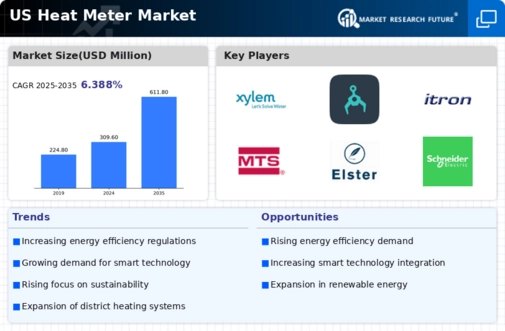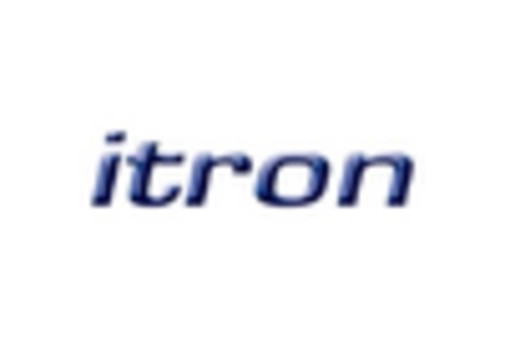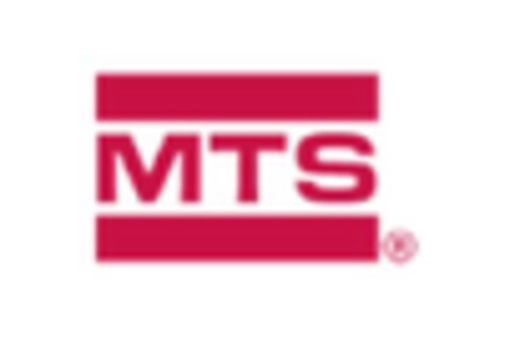The heat meter market in the US is characterized by a competitive landscape that is increasingly shaped by technological advancements and a growing emphasis on energy efficiency. Key growth drivers include the rising demand for smart metering solutions and the regulatory push towards sustainable energy practices. Major players such as Honeywell (US), Siemens (US), and Itron (US) are strategically positioned to leverage these trends. Honeywell (US) focuses on innovation in smart technology, while Siemens (US) emphasizes digital transformation and integration of IoT solutions. Itron (US) is enhancing its operational focus on data analytics and customer engagement, collectively shaping a competitive environment that prioritizes technological differentiation and customer-centric solutions.
In terms of business tactics, companies are increasingly localizing manufacturing to reduce lead times and optimize supply chains. The market structure appears moderately fragmented, with several key players exerting influence over various segments. This fragmentation allows for niche players to thrive, while larger companies consolidate their market share through strategic partnerships and acquisitions, thereby enhancing their competitive positioning.
In November 2025, Honeywell (US) announced a partnership with a leading utility provider to deploy advanced heat metering solutions across multiple states. This collaboration is expected to enhance energy management capabilities and improve customer service through real-time data access. The strategic importance of this partnership lies in its potential to set a benchmark for future collaborations in the sector, emphasizing the role of partnerships in driving innovation.
In October 2025, Siemens (US) launched a new line of heat meters equipped with AI-driven analytics. This product aims to provide utilities with enhanced predictive maintenance capabilities and operational efficiencies. The introduction of AI technology signifies a shift towards more intelligent metering solutions, which could redefine operational standards in the industry.
In September 2025, Itron (US) expanded its service offerings by integrating cloud-based solutions into its heat metering products. This move is indicative of a broader trend towards digitalization, allowing for improved data management and customer interaction. The strategic importance of this integration lies in its ability to enhance user experience and operational efficiency, positioning Itron (US) as a leader in the digital transformation of the heat meter market.
As of December 2025, current competitive trends are heavily influenced by digitalization, sustainability, and the integration of AI technologies. Strategic alliances are increasingly shaping the landscape, as companies recognize the value of collaboration in driving innovation. The competitive differentiation is likely to evolve from traditional price-based competition to a focus on technological advancements, reliability in supply chains, and the ability to offer comprehensive, customer-centric solutions. This shift underscores the importance of innovation as a key driver of market success.






















Leave a Comment